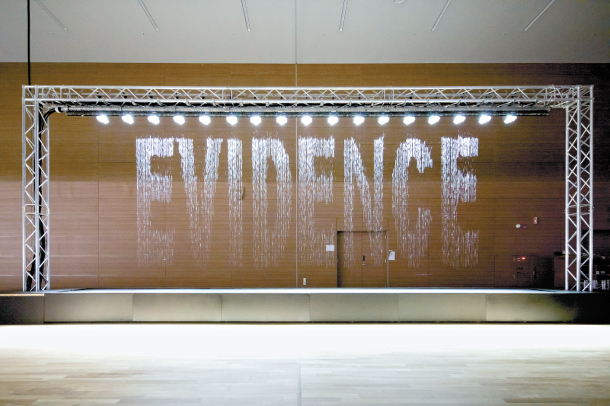
The audiovisual installation AURA by Nick Verstand (a contemporary artist who researches the boundary between the immaterial and material world, and strives to create art that breaks down social boundaries) presents the experimenters’ emotions visually as light compostions in various forms and shapes. The intensity and colour of the forms are translated from brain waves, heart rate variability, and galvanic skin responses of the experimenters, which are collected through wearable biosensors. These emotional cues are being processed and analyzed by the system and derived into visible light. Through influences of musical compositions, the lights would respond to the changes of one’s emotions.This installation tributes to artist Anthony Mccall, who intends to explore light as a medium. Through these series of transformations, AURA provides a possibility for people to have a better understanding of themselves and their emotions through colours and intensities. Quoting the website of AURA, “the installation symbolises the materialisation of (internal) metaphysical space into (external) physical space.” This installation allows the resulting experiences to be a co-creation of the experimenters and artists, and generates a hypnotizing visual experience for the mind.
![[OLD FALL 2019] 15-104 • Introduction to Computing for Creative Practice](../../../../wp-content/uploads/2020/08/stop-banner.png)


